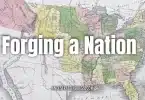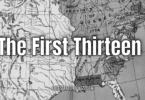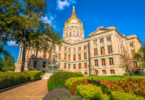Trenton is the state capital of New Jersey. It is also the county seat of Mercer County. It had a brief stint as the capital of the United States in 1784. The city is part of the New York Combined Statistical Area and borders the Philadelphia Metropolitan Area. It used to be part of the Philadelphia Combined Statistical Area but was moved to the New York area in 2000. Trenton has a population of about 85,000 people, which makes it the tenth most populous city in the state.
The city of Trenton has a murky history, but mention of it was made in writing as early as 1719 when a document mentioned a constable being appointed to the town of Trenton. This was when Trenton was still a part of Hunterdon County. The boundaries for the town of Trenton were recorded in 1720, and a courthouse and county jail were built there that same year. Also that year, the Freeholders of Hunterdon County began meeting annually in Trenton. Trenton was declared the capital of New Jersey in 1790. The City of Trenton was outlined within Trenton Township in 1792. Trenton Township was incorporated along with a group of 104 other townships by an act of the New Jersey State Legislature in 1798. This initial group was the original group of incorporated townships in New Jersey.
In 1834, parts of Trenton Township were removed to give to the newly formed Ewing Township, which gave Ewing more square miles of land. The part of Trenton Township that was left after this was taken into the City of Trenton in 1837. Other annexations over the next fifty years included the City of Trenton absorbing South Trenton Borough, parts of Nottingham Township, the Borough of Chambersburg Township, Millham Township, and Wilbur Borough. Parts of Ewing Township and Hamilton Township were annexed to Trenton in 1900.
Naturally, European settlers were not the first people in the area that eventually became Trenton. The earliest known humans to live there were the Lenape Native American tribe. The first known Europeans came to the area that would be Trenton in 1679. These were Quaker settlers. At the time the Quakers came, the area was called the Falls of the Delaware, and the leader from the first group who came was named Mahlon Stacy, who was from the village of Handsworth in Sheffield, England. At the time they came, the Quakers were being persecuted in England and in other parts of New England. The area of Trenton offered them a place where they could go and practice their religious beliefs in peace and tranquility.
The town adopted the name Trent-Towne in 1719, which was a name that honored William Trent. Trent was one of the first landholders in the area, and he purchased most of the land in and around the settlement from the Stacy family. The town’s name was later shortened to Trenton.
The town was the site of the famous Battle of Trenton, which was an important battle during the American Revolution, as it was the first military victory achieved by George Washington during the Revolution. In fact, a crucial part of the Battle of Trenton is commemorated in the famous painting of George Washington crossing the Delaware River. What actually occurred at the Battle of Trenton began with George Washington and his army crossing the icy Delaware River on December 25 and 26, 1776, while going to Trenton. Once the army arrived at Trenton, they handily defeated the Hessian mercenary troops the British had stationed there.
There was a second Battle of Trenton, too. The official name of this battle is the Battle of the Assunpink Creek. This battle was fought in Trenton on January 2, 1777. After the Revolution was over and won by the Americans, the Congress of the Confederation met at the French Arms Tavern in Trenton from November 1, 1784, to December 24, 1784. Most of the New England states and other northern states preferred Trenton as a location for a permanent capital of the new United States. But, the southern states did not care for this notion, as Trenton was too far away to easily travel to for their Congressional representatives. The location of Washington, D.C., was a compromise reached between the northern and southern states for the location of the new national capital.
Trenton hosted a reception for George Washington as he made his journey to New York City for his first presidential inauguration. New York City was named as the temporary United States capital until the capital city could be built in Washington, D.C.
The city played another important wartime role during the War of 1812. During this period, the city served as the location of the primary hospital of the United States Army. It was located on present day Broad Street.
During the 1800s, Trenton grew from a town into a city as immigrants from Europe came to it in a steady stream. They mostly came to work in the city’s pottery mills and wire rope mills. In 1837, the population of Trenton was too large for governing by council, as it had been. In response to the new size of the city, a mayoral government was adopted, including bylaws that are still in place and in operation in Trenton today.
Also of note in Trenton history is the infamous case of the Trenton Six. These were a group of six African-American men who were arrested in 1948 for the alleged murder of an elderly white shopkeeper. The actual murder weapon was said to be a soda bottle. The Six were arrested without warrants and were denied, lawyers. All six were sentenced to death based only on what were later described as coerced confessions. The Communist Party and the NAACP intervened, which resulted in several appeals and four trials. Five of the six men were eventually acquitted and released (a sixth one died while still in prison awaiting one of his trials). This incident became the subject of a book called Jersey Justice: The Story of the Trenton Six, by Cathy Knepper.







